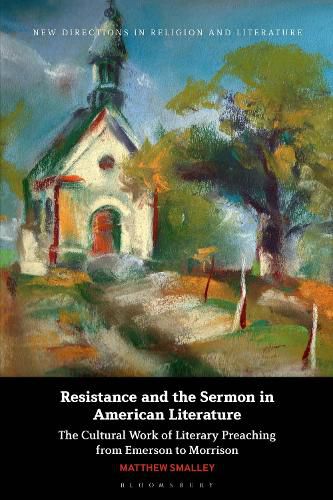Readings Newsletter
Become a Readings Member to make your shopping experience even easier.
Sign in or sign up for free!
You’re not far away from qualifying for FREE standard shipping within Australia
You’ve qualified for FREE standard shipping within Australia
The cart is loading…






With seemingly obsessive regularity, American authors, from the mid-nineteenth century to the present, evoke the sermon at culturally loaded moments in their works, deploying the form to underscore the cultural work they imagine their novels or poetry to perform. Examining this longstanding tradition of "literary preaching," this book draws on literary applications of design theory to provide a nuanced account of American literature's complex, anxious, and persistent engagement with the Protestant sermon.
Analyzing literary preaching as a transhistorical form that simultaneously attracts and repels authors, Smalley demonstrates how major US writers-Ralph Waldo Emerson, Walt Whitman, Nathaniel Hawthorne, Rebecca Harding Davis, William Faulkner, Zora Neale Hurston, and Toni Morrison-have subverted the sermon's predominantly religious content in order to reimagine profound moments of reform in a political, cultural, and aesthetic mode. This study elucidates new lines of literary kinship, offers fresh readings of familiar works, and establishes literary preaching as an undertheorized but significant tradition in American literature.
$9.00 standard shipping within Australia
FREE standard shipping within Australia for orders over $100.00
Express & International shipping calculated at checkout
With seemingly obsessive regularity, American authors, from the mid-nineteenth century to the present, evoke the sermon at culturally loaded moments in their works, deploying the form to underscore the cultural work they imagine their novels or poetry to perform. Examining this longstanding tradition of "literary preaching," this book draws on literary applications of design theory to provide a nuanced account of American literature's complex, anxious, and persistent engagement with the Protestant sermon.
Analyzing literary preaching as a transhistorical form that simultaneously attracts and repels authors, Smalley demonstrates how major US writers-Ralph Waldo Emerson, Walt Whitman, Nathaniel Hawthorne, Rebecca Harding Davis, William Faulkner, Zora Neale Hurston, and Toni Morrison-have subverted the sermon's predominantly religious content in order to reimagine profound moments of reform in a political, cultural, and aesthetic mode. This study elucidates new lines of literary kinship, offers fresh readings of familiar works, and establishes literary preaching as an undertheorized but significant tradition in American literature.